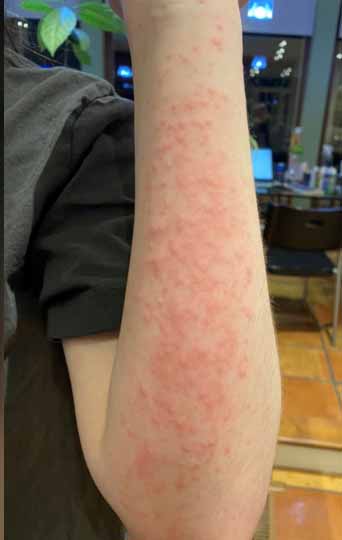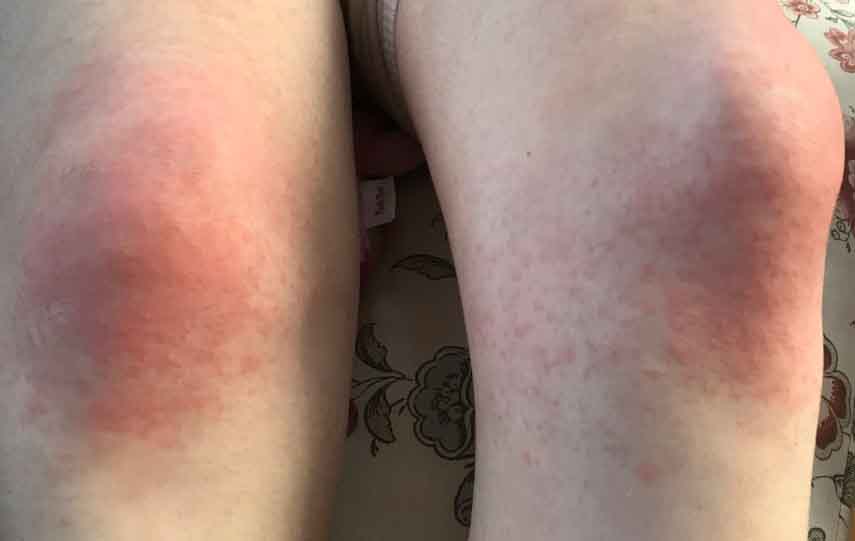You may hate the cold, but for people suffering from “cold urticaria”, it may cause anaphylaxis requiring a jab from their epinephrine auto-injector and a trip to the ER.
CTV News has the story of Eryn Margolese, a 15-year-old girl from Montreal. Back in 2020 she developed a rash of raised, itchy bumps that would come on at odd times and take hours to go away. She did her best to ignore it and go on with her life.

“I didn’t really know what was happening,” she said. “I just had some rash, and I was like ‘OK, that’s weird,’ and then it kept happening and I had no idea what it was.”
She saw a number of doctors who attempted to help. Could it be a soap or laundry detergent she was reacting to? No, Eryn hadn’t been exposed to anything new.
With no resolution, Eryn consulted Dr Moshe Ben-Shoshan who placed an ice cube on her arm causing the hives to appear.
Ben-Shoshan recognized her symptoms: she was experiencing a rare reaction to cold temperatures otherwise known as cold urticaria.
Said Ben-Shoshan:
Any one of us will get redness where we put the ice cube, but this patient will get hives.
It looks like an allergy because you get the hives. But the trigger is not an allergen like peanut or… pollen.
Basically the exposure to cold is assumed to generate an auto-allergen, so a substance that your immune system reacts to.
When you think about an allergy, you try to look for an external trigger that you can remove from your environment, like you know, a food… or a cat or a dog,” the doctor explained.
This is different. In order to control it you need to control your internal environment by keeping your temperature warmer, by protecting your exposed surface areas, by taking antihistamines and in cases that are more severe [carrying an epinephrine injector.]
In 20% of those that suffer from cold urticaria, the reaction can rise to the level of anaphylaxis, requiring prompt administration of epinephrine and a hospital visit.
Symptoms usually start in early adulthood with the most common symptom being a red, itchy rash that appears on the skin when it is exposed to cold weather or water. The reaction usually occurs within 5-10 minutes after exposure and can last for 1-2 hours.

Cold urticaria is rare and the cause is unknown. In some cases, it may be associated with an infection, insect bite, or blood cancer. Treatment may consist of avoiding exposures that may trigger a reaction and medications that prevent allergic reactions like antihistamines.

For Eryn, the news was difficult to hear as she loved swimming and boating in a cold lake at summer camp. Now, she would have to wade in slowly and pay close attention to her symptoms. Diving in was no longer an option.
Now she takes a daily antihistamine and carries an epinephrine auto-injector.
See her story and Dr Ben-Shoshan’s discussion of cold urticaria in this CTV News report:
- Think you hate the cold? Meet the Montreal girl who’s ‘allergic’ to it — CTV News
- Cold urticaria — NIH/Genetic and Rare Diseases Information Center





